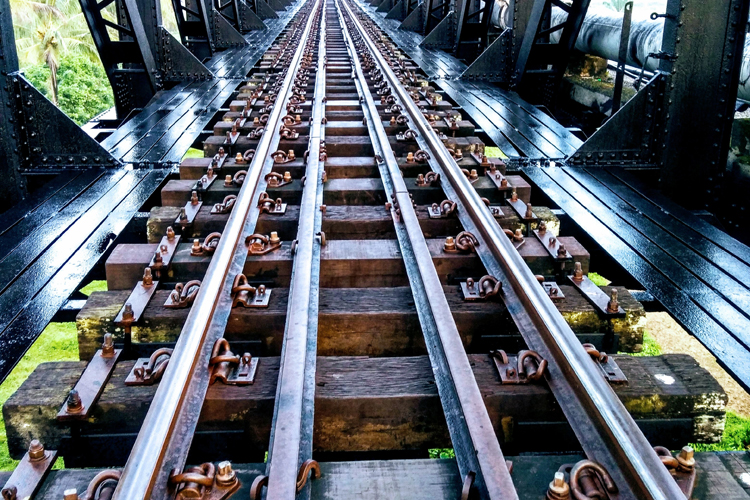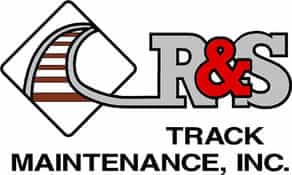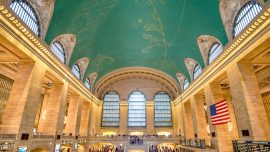
The Importance Of Railroad Track Inspections
R&S Track, your Midwest railroad contractor, provides railroad inspections as part of our high-quality services. These track inspections have helped many clients monitor a track’s overall condition. Track inspections pay for themselves because they prevent future costs down the line. A railroad track’s wear and tear are inescapable, but you can curtail its progression with an R&S track inspection service.
Rails are constantly exposed to severe stress due to heavy freight, high-speed round-the-clock trains, and the rail cars’ intermittent braking and accelerating. With regular everyday wear and tear and severe stress, a variety of rail defects will occur. Head, web, foot, switches, bolts, and welds are the most common places to find defects. Today, we would like to discuss the importance of railroad track inspections and how a midwest railroad contractor can lend a helping hand.
Railroad Inspections Reveal Rail Defects Including:
- Abrasion
- Deformation
- Machining errors and Fatigue
There are other types of rail surface defects as well.
Rail Surface Defects Include
- Squats—Squats predominantly happen on the flat part of a rail’s surface and occur when there is a mismatch between the wheel and the rails. The different types of squat defects include vertical, diagonal, and horizontal. The defect grows steadily while branching out horizontally underneath the top of the bearing, dislodging it from the body of the rail.
- Weld – Track welding produces weak points that are prone to abnormalities and show up in the construction process and during maintenance of the rails. When a new line is assembled, some rails are joined by welding. In addition, rail maintenance also uses the welding process when a rail needs to be replaced.
- Joints – Joint area defects are gradual fractures in the web of the joint, usually near or at the end of the rail. The typical joint web defects include bolt cracks and separation at the joint.
There are many causes of rail defects and rail failure. Some of these causes include bending and shear stress, wheel/rail contact stress, thermal stress, residual stress, and dynamic effects.
Railroad Inspection Defects As A Result Of Rail Contact Stress Or Contact Fatigue Include
- Tongue lipping occurs when two wheels roll along the same spot causing a groove to form.
- Head checking occurs when a wheel rolls into a gauge corner and creates a crack.
- Squats usually occur when a wheel rolls across an existing crack, thus creating a new crack.
- Another type of defect is caused by water filling up a crack and expanding. This produces a frozen crack.
- Rail corrosion can also be caused by water and liquid.
Railroad track inspections assess the operating conditions of the rail and identify areas needing maintenance. But even more importantly, inspections can prevent costly accidents.
In fact, one analysis shows that as a result of railroad track inspections, costs of railway issues and accidents have consistently gone down. The first federal track safety standards came into effect in 1971 following the enactment of the federal railroad safety act of 1970.
These regulations require railroads to ensure that employees who work near the tracks perform visual inspections. A qualified inspector should know about railroad tracks, railroads, and railroad safety. They should also have experience inspecting and reporting on a track’s safety conditions and the safety procedures followed by workers.
The job is physically demanding and dangerous. An inspector should be able to manage long periods of walking on rocky, uneven surfaces. They will be bending frequently and crouching to measure track geometry. Inspecting track defects requires climbing up embankments and track structures along with mounting and dismounting from railway cars.
Most inspection work takes place along railroads, in railroad yards, around track structures, and near railroad cars. Inspectors must wear safety glasses, a helmet, and safe, comfortable shoes when inspecting railroad property. They should be very cautious about getting caught in the moving pieces of turnouts or falling off structures.
There is a good chance they’ll be exposed to heat, cold, rain, snow, poison ivy, or other unpleasant elements. Inspectors also shouldn’t be afraid of heights since they need to climb on bridges over ground and water.
Track inspectors are responsible for inspecting railroad tracks, bridges, tunnels, etc. However, they also inspect freight cars. It’s a dangerous job because they are constantly around moving trains. Even so, a railroad track inspector needs to be a team player who is very organized and stays calm during stressful times.
They are required to complete track evaluations and report violations when necessary. The inspector will determine the need for safety meetings and be able to provide training for railroad employees. The training should include proper inspection, maintenance, and safety procedures for track operation.
A Professional Midwest Railroad Inspection: R&S Track
A satisfied customer is our main focus, and we won’t leave until the job is done. We are equipped to handle any job. To learn more about our services which included railroad track inspections, contact us today!




0 comments
Write a comment